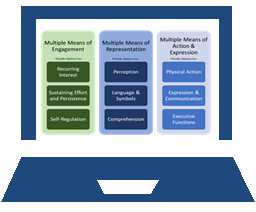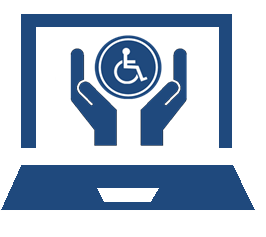Examining and Addressing Accessibility Issues Facing African Immigrant Students in K12
Katlego Ntibinyane
Introduction
 According to Statistics Canada (2017), there has been a steady increase in the number of African immigrant families with young children relocating to Canada. This has shifted the demographics of classrooms and posed unique challenges for children with undiagnosed and unsupported learning disabilities. African immigrant families often face various barriers to accessing resources needed for their children to succeed academically. Parents of these children may be unfamiliar with the Canadian educational system, which makes it difficult for them to know and understand their children’s rights of accessibility to resources in schools. These children with learning disabilities are often set back academically and are typically underrepresented among successful children with learning disabilities (Dada et.al., 2024). This article will critically examine and address accessibility issues faced by African immigrant students in Canadian schools. It will also explore how instructional design strategies and digital resources can be used to reduce the barriers of accessibility to education among these children. Accessibility here refers to how all students of all backgrounds with various abilities and disabilities receive the same benefits from the education system as per the Canadian Charter of Rights and Freedoms. Barriers in this article include obstacles that prevent students from benefiting from educational resources and support services (D’Intino, 2017).
According to Statistics Canada (2017), there has been a steady increase in the number of African immigrant families with young children relocating to Canada. This has shifted the demographics of classrooms and posed unique challenges for children with undiagnosed and unsupported learning disabilities. African immigrant families often face various barriers to accessing resources needed for their children to succeed academically. Parents of these children may be unfamiliar with the Canadian educational system, which makes it difficult for them to know and understand their children’s rights of accessibility to resources in schools. These children with learning disabilities are often set back academically and are typically underrepresented among successful children with learning disabilities (Dada et.al., 2024). This article will critically examine and address accessibility issues faced by African immigrant students in Canadian schools. It will also explore how instructional design strategies and digital resources can be used to reduce the barriers of accessibility to education among these children. Accessibility here refers to how all students of all backgrounds with various abilities and disabilities receive the same benefits from the education system as per the Canadian Charter of Rights and Freedoms. Barriers in this article include obstacles that prevent students from benefiting from educational resources and support services (D’Intino, 2017).
Background and Context
 In recent years, there has been a significant number of African immigrants coming to Canada (Statistics Canada, 2017). This growing trend has led to the population of Africans relocating to Canada being the second highest among all immigrants (Canadian Press, 2017). Statistics Canada also records that among the immigrants, the African population is the most youthful. This could mean that more African immigrant students are currently enrolled in K-12 programs. To ensure equitable access to education for students with undiagnosed learning disabilities, there is a pressing need for educators to apply inclusive teaching practices. It will be necessary for this youthful population to be provided access to early screening psychoeducational assessments, individualized education plans, assistive technologies, and trained educators to support their learning needs. The parents’ role is pivotal as they will need to be primary advocates for their children’s educational needs. As parents, they will need to learn how the Canadian education system works and places to get resources, as well as being empowered with knowledge of learning disabilities.
In recent years, there has been a significant number of African immigrants coming to Canada (Statistics Canada, 2017). This growing trend has led to the population of Africans relocating to Canada being the second highest among all immigrants (Canadian Press, 2017). Statistics Canada also records that among the immigrants, the African population is the most youthful. This could mean that more African immigrant students are currently enrolled in K-12 programs. To ensure equitable access to education for students with undiagnosed learning disabilities, there is a pressing need for educators to apply inclusive teaching practices. It will be necessary for this youthful population to be provided access to early screening psychoeducational assessments, individualized education plans, assistive technologies, and trained educators to support their learning needs. The parents’ role is pivotal as they will need to be primary advocates for their children’s educational needs. As parents, they will need to learn how the Canadian education system works and places to get resources, as well as being empowered with knowledge of learning disabilities.
The right to education for all students, especially those with learning disabilities, is firmly supported by the Canadian Charter of Rights and Freedoms. According to this law, children with learning disabilities have the right to receive the same benefits from the education system as their non-disabled peers (Canadian Charter of Rights and Freedoms, 1982, s. 15). It is thus imperative that students with learning disabilities are given the necessary accommodations to support their learning needs. Educational boards and schools need to have funding for resources to create an inclusive classroom for all learners, as they have a duty to provide education.
Although there are laws that protect the right to education for all students, there tend to be accessibility issues experienced by students with learning disabilities. There is typically a gap between what students with learning disabilities experience in schools and what the law demands. Students may not have access to learning materials due to the lack of adequate individualized accommodations. For African immigrant students, accessibility issues are due to the lack of awareness of learning disabilities by parents, systemic and institutional barriers, as well as inadequately trained educators and school support (Khanlou et al., 2015).
The following will be a discussion of some specific accessibility issues that are faced by African immigrant children, which cause a barrier to their accessing support services.
Accessibility Issues Faced by African Immigrant Children with Learning Disabilities
![]() Several examples of learning disabilities may be faced by African immigrant children. For this chapter, the focus will be on learning disabilities that are related to reading, writing, organizational, and social skills. These may include Dyslexia, Dysgraphia, Dyscalculia, and Attention Deficit Hyperactivity Disorder (ADHD). Some of the African immigrant children who may have these learning disabilities will likely experience academic underachievement despite having average to above-average intelligence (D’Intino, 2017).
Several examples of learning disabilities may be faced by African immigrant children. For this chapter, the focus will be on learning disabilities that are related to reading, writing, organizational, and social skills. These may include Dyslexia, Dysgraphia, Dyscalculia, and Attention Deficit Hyperactivity Disorder (ADHD). Some of the African immigrant children who may have these learning disabilities will likely experience academic underachievement despite having average to above-average intelligence (D’Intino, 2017).
Accessibility issues for African immigrant students with learning disabilities are often rooted in cultural factors that are interconnected. This concept of learning disabilities may be understood differently in some African cultures. For example, when an African child exhibits hyperactivity or impulsivity, this may not necessarily be associated with a symptom of a learning disorder. This may be viewed as normal childhood behavior and lead to underreporting of a disability and a delay in seeking intervention (Cluett, 2025). As an African immigrant and a parent of a child with ADHD, I always believed that with time, my child would ‘outgrow this behavior’. The cultural beliefs about behaviour, stigma, lack of awareness about learning disabilities, and language barriers may delay African immigrant children from being diagnosed early and accessing accommodations (Cluett, 2025). Some parents may fear seeking help or disclosing their child’s challenges due to potential judgment from the community (Cluett, 2025). This fear can be compounded by a reluctance to ‘label’ their child as disabled, which creates a barrier to accessing the help they need to succeed in schools. The hesitation of parents is further increased by the general lack of awareness and knowledge about learning disabilities among some African immigrant families, who may not have been exposed to this information in their countries of origin (Cluett, 2025). This lack of familiarity with learning disorders makes it difficult for parents to recognize symptoms and navigate the complex Canadian healthcare and school systems to get their children the support they need. All these cultural factors, such as beliefs about behavior, stigma associated with disability, and a lack of awareness, combined, cause delays for a child’s diagnosis and access to necessary accommodations.
The difference in language and culture may also pose a barrier to these children gaining access to resources. Firstly, there may be an assumption that immigrant children are fluent in English or French. There may be a disconnect with the learning materials that they are exposed to, which may not have translations to their native languages. The information available to parents in schools and health care centres may also be available in English and French only (Cluett, 2025). This may cause delays in accessing appropriate support services for children with learning disabilities. This language barrier may make it difficult for parents to effectively communicate the needs of their children. They may also not be fully aware of the resources available and understand the process of getting support for their children (Dada et al., 2024). This may also contribute to the under-identification of their children with learning disabilities and also lack of consent for services.
Further to the above challenges, there are systemic barriers within the education school boards. There are typically long waitlists for getting psychoeducational assessments. According to Cohen-Silver et al. (2024), in many regions of Canada, children can wait up to two years for psychoeducational testing with the public education system. This long wait to get access for a diagnosis would likely impact the vulnerable communities the most. For children of African immigrants who may already face language barriers among other things, the long wait for getting a diagnosis will result in a delay in getting accommodations at school. Since parents may be unfamiliar with the complexities of the education system in how it supports children with learning disabilities, it may be challenging to advocate for these children during this waiting period (Cohen-Silver et al., 2024).
These long waitlists for getting a diagnosis for learning disabilities will leave parents with the only option of seeking private testing. The private assessments can be prohibitively high and not be covered by health insurance plans (Cohen-Silver et. al, 2024). According to Dyslexia Canada, getting a diagnosis with a private psychologist can cost between $2,000 to $5,000 (CAD). For a family that has recently relocated and is still establishing its financial resources in Canada, these private tests might be unattainable. The private psychoeducational assessments will only be available to those with access to health insurance and high-income families. This further exacerbates the issue for children with undiagnosed learning disabilities. The financial constraints faced by African immigrant families will mean that their children will not have access to timely interventions, which will ultimately affect their academic success (Cohen-Silver et. al, 2024).
Designing Successful Instructional Strategies
 Educators who work with children with suspected learning disabilities can be proactive when designing teaching materials to accommodate different learning needs. This can be done through using the Universal Design for Learning framework, which allows for flexibility in teaching and assessments (Basham et al., 2016). Teaching and learning resources can be varied to provide different ways in which students can learn. The use of digital resources that have speech-to-text, African languages, read-aloud, and video options can improve accessibility among students.
Educators who work with children with suspected learning disabilities can be proactive when designing teaching materials to accommodate different learning needs. This can be done through using the Universal Design for Learning framework, which allows for flexibility in teaching and assessments (Basham et al., 2016). Teaching and learning resources can be varied to provide different ways in which students can learn. The use of digital resources that have speech-to-text, African languages, read-aloud, and video options can improve accessibility among students.
African immigrant children who may not have a formal diagnosis of learning disabilities can benefit from multiple ways of engaging with learning materials. Educators can create interactive group environments with fellow peers so that learning is not individualized. The use of collaborative digital tools such as Google Docs (n.d.) may be suitable for students who have dyslexia because they have built-in accessibility features. The use of interactive groups in a class can encourage verbal communication, creative thinking, and engage students’ cognitive abilities not associated just with reading and writing (Ugalde et al., 2021).
For children who may have undiagnosed learning disabilities such as Dyscalculia or Dysgraphia, they would benefit from interactive and multi-sensory learning activities (Basham et al., 2016). The hands-on and interactive activities would align with UDL principles. Some examples of digital interactive tools that are interactive and support students with learning disabilities include online platforms like Prodigy Math (n.d.), Book Creator (Tools for Schools, 2025), Raz-Kids (LAZEL, Inc., 2025), and gamifying learning environments like Kahoot! (2025). These resources can be engaging to students and offer multiple ways of accessing learning materials. A classroom would be more inclusive and support students even if they have no formal diagnosis (Basham et al., 2016).
Further to this discussion about potential instructional design strategies, African immigrant students with suspected learning disabilities and not fluent in English or French can use digital resources with translation features. Text-to-Speech applications can be paired with translation features that convert English to native African languages, as well as Google Classroom (n.d.), which can integrate multilingual resources (Basham et al., 2016). These tools can make teaching and learning materials more accessible to students with learning disabilities. Educators can create inclusive classrooms that recognize the diverse students and suspected learning disabilities.
The use of Augmentative and Alternative Communication (AAC) systems has also been shown to enhance communication and engagement among students with special needs (Ugalde et al., 2021). When AAC is readily available in the classroom, it would be beneficial for students who may have undiagnosed learning disability. This tool can enhance communication and encourage engagement in classroom activities and improve students’ academic outcomes (Ugalde et al., 2021). Since students may not be able to actively participate in class due to a learning disability, such as ADHD, the use of an AAC may allow them to improve their communication skills and engage in class activities. Students can feel empowered to communicate with their peers and teachers and help bridge the communication gap (Basham et al., 2016).
Digital Support Resources
 According to Khanlou et al. (2015), sometimes parents of immigrant children do not know where to go to find resources available for their children with learning disabilities. School boards and individual schools can be the primary places for parents to know and understand learning disabilities. School administrators can create a Google Docs (n.d.) platform that can be a one-stop information site that provides detailed information with links to gain in-depth knowledge about learning disabilities. It can have multiple language features to empower parents to know and understand learning disabilities in their native language. The places where parents can go to seek psychoeducational assessments can also be provided. As a recent immigrant, and a parent with of child with special needs, the Google Docs platform would have empowered me with learning disabilities and allowed me to look out for early signs of need in my child.
According to Khanlou et al. (2015), sometimes parents of immigrant children do not know where to go to find resources available for their children with learning disabilities. School boards and individual schools can be the primary places for parents to know and understand learning disabilities. School administrators can create a Google Docs (n.d.) platform that can be a one-stop information site that provides detailed information with links to gain in-depth knowledge about learning disabilities. It can have multiple language features to empower parents to know and understand learning disabilities in their native language. The places where parents can go to seek psychoeducational assessments can also be provided. As a recent immigrant, and a parent with of child with special needs, the Google Docs platform would have empowered me with learning disabilities and allowed me to look out for early signs of need in my child.
Other digital resources could be found from settlement service providers such as the Immigration, Refugees and Citizenship Canada (IRCC) (Government of Canada, n.d.). This is an agency that can assist parents with information online about the Canadian education system, as well as community outreach programs that help find places that offer support to children with learning disabilities.
There are associations such Learning Disabilities Association of Canada (LDAC, 2024) that have valuable resources for parents and children with learning disabilities. They provide online workshops, webinars, and learning modules that teach in-depth learning disabilities and train parents to be advocates for their children. For children who may be undiagnosed and waiting for an assessment, LDAC provides resources that can help parents understand how UDL principles can help their children succeed in a classroom.
Conclusion
Education should be accessible to all students as every child has the right to learn (Canadian Charter of Rights and Freedoms, 1982, s. 15). The African immigrant families with children who may be undiagnosed and suspected to have learning disabilities, need to be empowered with information about places that can help them seek help for their children (Khanlou et al.,2015). Educators can be proactive in teaching by incorporating the use of UDL principles to make instructional materials accessible to all students. Students who may not have a diagnosis may be provided with various ways of learning instead of the traditional reading and writing materials (Basham et al., 2016). The use of digital resources that have multilingual options would also help these children be able to engage and access learning materials and succeed academically. Since access to private and timely psychoeducational assessments may be inaccessible to some families, schools can provide online platforms that are engaging about learning disabilities. Parents can be empowered to advocate for their children while waiting for formal assessments.
References
Basham, J. D., Smith, S. J., & Satter, A. L. (2016). Universal design for learning: Scanning for alignment in K-12 blended and fully online learning materials. Journal of Special Education Technology, 31(3), 147-155. https://doi.org/10.1177/0162643416660836
Canadian Charter of Rights and Freedoms, Part I of the Constitution Act, 1982, being Schedule B to the Canada Act 1982 (UK), 1982, c 11. https://laws-lois.justice.gc.ca/eng/const/page-12.html
Canadian Press. (2017, October 25). Key highlights from the latest release of 2016 census data. CBC News. http://www.cbc.ca/ news/politics/key-highlights-2016-census-dataindigenous-immigrant-housing-1.4370908
Cluett, R. G., & Hai, T. (2025). Understanding disparities: Mental health and neurodevelopmental challenges, supports and barriers for immigrant families in Canada. Children, 12(4), 468. https://doi.org/10.3390/children12040468
Cohen-Silver, J., van den Heuvel, M., Freeman, S., Ogilvie, J., & Chobotuk, T. (2024). Evaluating and caring for children with a suspected learning disorder in community practice. Paediatrics & Child Health, 29(8), 544-547. https://doi.org/10.1093/pch/pxae089
D’Intino, J. S. (2017). Learning disabilities in Canada: Definitions and accommodations. Canadian Psychology/Psychologie canadienne, 58(3), 227-237. https://doi.org/10.1037/cap0000116
Dada, S., Khan, N., & Dewji, N. (2024). Left behind: Newcomer children with disabilities and their families. Frontiers in Public Health, 12, Article 1332403. https://doi.org/10.3389/fpubh.2024.1332403
Dyslexia Canada. (n.d.). Dyslexia Canada | Official Website. https://dyslexiacanada.org/
Google (n.d.). Google Classroom. https://edu.google.com/workspace-for-education/classroom/
Google (n.d.). Google Docs. https://www.google.ca/docs/about/
Government of Canada (n.d.). Immigration, Refugees and Citizenship Canada. https://www.canada.ca/en/immigration-refugees-citizenship.html
Kahoot! (2025). https://kahoot.com/schools-u/
Khanlou, N., Haque, N., Sheehan, S., & Jones, G. (2015). “It is an issue of not knowing where to go”: Service providers’ perspectives on challenges in accessing social support and services by immigrant mothers of children with disabilities. Journal of Immigrant Minority Health, 17(6), 1840-1847. https://doi.org/10.1007/s10903-014-0122-8
Khanlou, N., Mustafa, N., Vazquez, L. M., Haque, N., & Yoshida, K. (2015). Stressors and barriers to services for immigrant fathers raising children with developmental disabilities. International Journal of Mental Health and Addiction, 13(4), 659-674. https://doi.org/10.1007/s11469-015-9584-8
LAZEL, Inc. (2025). Raz-Kids. https://www.raz-kids.com/
Learning Disabilities Association of Canada (2024). https://www.ldac-acta.ca/
Prodigy (n.d.). Make Math and English Fun for Kids. https://www.prodigygame.com/main-en/
Salami, B., Alaazi, D. A., Yohani, S., Vallianatos, H., Okeke-Ihejirika, P., Ayalew, T., & Nsaliwa, C. (2020). Parent-child relationships among African immigrant families in Canada. Family Relations, 69(4), 743-755. https://doi.org/10.1111/fare.12454
Statistics Canada. (2024, October 25). The diversity of the Black populations in Canada, 2021: A sociodemographic portrait (Catalogue no. 89-657-X2024005). https://www150.statcan.gc.ca/n1/pub/89-657-x/89-657-x2024005-eng.htm
Tools for Schools (2025). Book Creator. https://bookcreator.com/
Ugalde, L., Santiago-Garabieta, M., Villarejo-Carballido, B., & Puigvert, L. (2021). Impact of interactive learning environments on learning and cognitive development of children with special educational needs: A literature review. Frontiers in Psychology, 12, 674033. https://doi.org/10.3389/fpsyg.2021.674033
